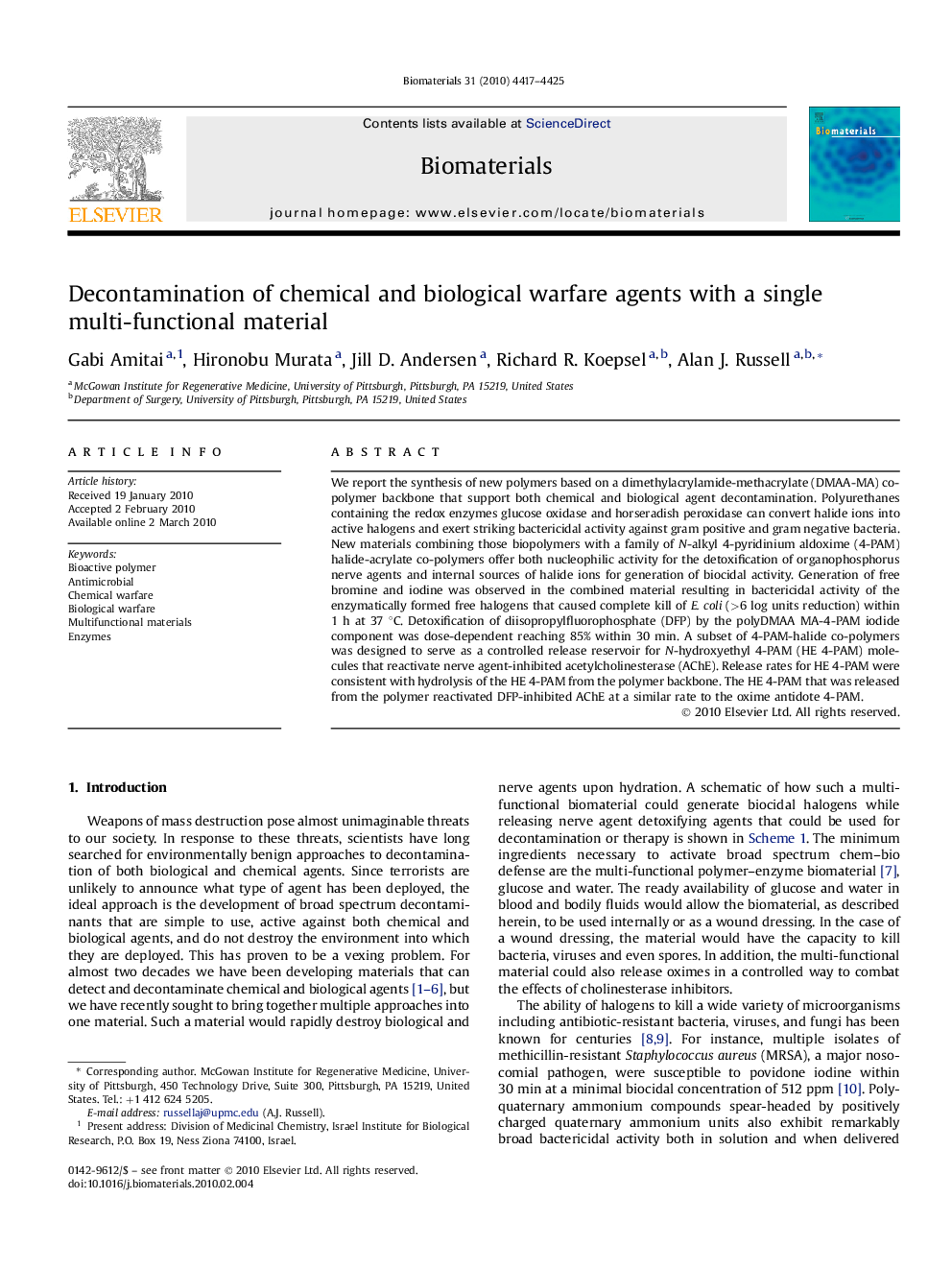| Article ID | Journal | Published Year | Pages | File Type |
|---|---|---|---|---|
| 8449 | Biomaterials | 2010 | 9 Pages |
We report the synthesis of new polymers based on a dimethylacrylamide-methacrylate (DMAA-MA) co-polymer backbone that support both chemical and biological agent decontamination. Polyurethanes containing the redox enzymes glucose oxidase and horseradish peroxidase can convert halide ions into active halogens and exert striking bactericidal activity against gram positive and gram negative bacteria. New materials combining those biopolymers with a family of N-alkyl 4-pyridinium aldoxime (4-PAM) halide-acrylate co-polymers offer both nucleophilic activity for the detoxification of organophosphorus nerve agents and internal sources of halide ions for generation of biocidal activity. Generation of free bromine and iodine was observed in the combined material resulting in bactericidal activity of the enzymatically formed free halogens that caused complete kill of E. coli (>6 log units reduction) within 1 h at 37 °C. Detoxification of diisopropylfluorophosphate (DFP) by the polyDMAA MA-4-PAM iodide component was dose-dependent reaching 85% within 30 min. A subset of 4-PAM-halide co-polymers was designed to serve as a controlled release reservoir for N-hydroxyethyl 4-PAM (HE 4-PAM) molecules that reactivate nerve agent-inhibited acetylcholinesterase (AChE). Release rates for HE 4-PAM were consistent with hydrolysis of the HE 4-PAM from the polymer backbone. The HE 4-PAM that was released from the polymer reactivated DFP-inhibited AChE at a similar rate to the oxime antidote 4-PAM.
